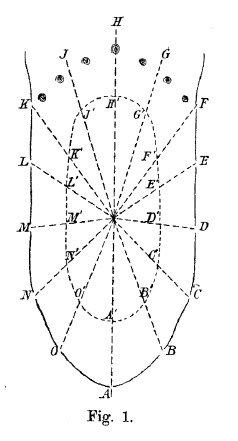Many are sure that there are different zones on the surface of the tongue, each of which is responsible for recognizing one of the tastes. We decided to check if this is actually true.
This information can often be meet on educational websites for schoolchildren and presentations to lessons biology. Usually is toldthat there are four zones on the surface of the tongue with their own unique specialization. Thus, the tip of the tongue recognizes sweet taste, the back part is responsible for bitter notes, the side surfaces specialize in salty, and the area on the sides in front of the back part perceives sour taste. Colors are also common scheme visualization of this data. According to the map of taste zones of the tongue, some sommeliers even recommend select special glasses for wine so that the drink immediately reaches the areas most sensitive to the bouquet.
The discovery of these zones and their localization on the surface of the tongue is usually attributed to the German scientist David Pauli Hoenig. Allegedly, by dripping solutions with different tastes onto different zones, he made such a discovery and described him in his dissertation “On the psychophysics of taste sensations” in 1901. Its text can still be found on the Internet in German today. It also provides a line graph showing the acuity of each taste depending on the area of the tongue.

However, this theory was popularized by a completely different person. American psychologist Edwin Boring in his article "Sensation and Perception in the History of Psychology" used data from Hoenig's work, and instead of the German scientist's cautious formulations of "the zone is most receptive" or "the zone showed the greatest sensitivity," he summarized the data and presented them in the form of absolute statements. From the English translation of Hoenig’s theory, the map of taste sensations familiar to us today was born.
Moreover, it contains only four tastes: sweet, sour, bitter and salty. The fifth taste - umami, or meat - was described and named in 1909 by the Japanese chemist Kikunae Ikeda. We taste umami we feel due to glutamic acid and some ribonucleotides contained in food. The most vivid impressions of this taste are we getwhen we eat meat, fish, seafood, seaweed, some vegetables (chinese cabbage, spinach, celery) and cheeses. In 2015, American scientists stated about the discovery of the sixth taste - oleogustus, the taste of fat. The head of the research team, Professor Richard Mates, considers the discovery of Oleogustus an important step in the strategy to combat obesity.

To date, it has been established that taste recognition answer special receptors. Not quite evenly, but they are distributed over the entire surface of the tongue. Moreover, the palate and even the throat play an important role in taste recognition. At the same time, it cannot be said that the theory about the specialization of tongue zones for each taste is completely untrue. In 2014, scientists discovered in an experiment on mice, such recognition cells are found not in the tongue, but in the brain. Groups of neurons focused specifically on one of the five tastes (the sixth taste, oleogustus, was not studied in the work, since the discovery was announced later).
Thus, the theory about areas of the tongue that separately recognize each individual taste is erroneous and most likely arose due to incorrect translation. We can feel each of the five (and maybe six) tastes with any part of the tongue, which is easy to verify from our own experience: the tip of the tongue can definitely distinguish sugar from salt, and meat broth from coffee or citric acid.

Not true
Read on the topic:
If you find a spelling or grammatical error, please let us know by highlighting the error text and clicking Ctrl+Enter.






